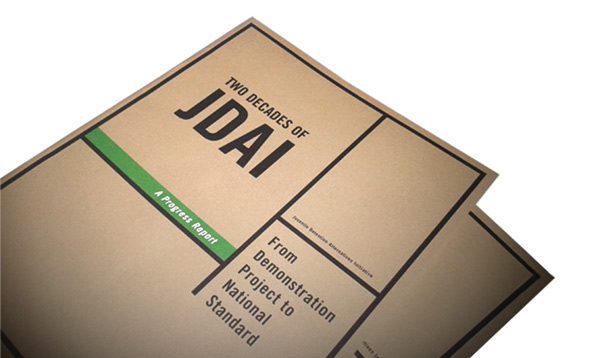The vision of the Annie E. Casey Foundation states: “All youth involved in the juvenile justice system have opportunities to develop into healthy, productive adults.” Indiana supports this vision and has chosen the Juvenile Detention Alternatives Initiative (JDAI), designed by the Foundation, as the method by which Indiana communities can implement meaningful juvenile justice system improvement.
The Juvenile Detention Alternatives Initiative is a public safety and juvenile justice system improvement strategy for working with youth in the juvenile justice system. It is based on the belief that it is in the best interest of youth and the community to provide community-based alternative programs which allow youth to remain in the community rather than in secured detention while still ensuring public safety.
Since inception in 1992, JDAI has been implemented in 200 sites in 39 states and the District of Columbia. The focus of JDAI is the juvenile detention component of the juvenile justice system. Reform at this critical point of entry for many young people can reduce detention expenses and foster the development of effective community based alternatives to detention, while enhancing public safety and the long term healthy development of youth.
Situated at the crossroads of America, Indiana is a state comprised of communities often vastly different in size and demographics. All Hoosiers value efficiency in government, safety on the streets of our communities, and the sound development of our children.
Currently, eight Indiana counties are implementing the JDAI core strategies:
- Clark
- Elkhart
- Howard
- Johnson
- Lake
- Marion
- Porter
- Tippecanoe
To date, JDAI counties have proven that we can reduce our detention population without jeopardizing public safety. These counties reduced their average daily population in secure detention by 37.7%, from 331 to 206, comparing the year prior to beginning JDAI to 2012. The reduction in the detention population across the sites did not have a negative impact on public safety. In fact, the eight counties collectively improved public safety during this time. For youth released on detention alternatives pre-disposition, counties achieved a 16% reduction in re-offense, from a rate of 23% in the year prior to JDAI to 7% in 2012.
Each local JDAI site is organized into a JDAI collaborative, known as the Local Steering Committee. Membership on each Committee includes: judges and court staff, law enforcement, prosecutors, public defenders, probation officers, county administrative staff, school personnel, detention center administrative staff, Department of Child Services’ staff, and community stakeholders. This multi-disciplinary approach enhances the ability to align local juvenile justice human resources, financial resources, and policies and procedures with the core values of JDAI. This approach allows JDAI counties to institutionalize and sustain juvenile justice system improvement efforts.
Institutionalizing on-going juvenile justice system improvement strategies requires both the commitment of key actors at the county level and the support of state leaders. In an effort to align JDAI core values, the state created the Indiana JDAI State Steering Committee. The State Committee is made up of state and local leaders, charged with guiding Indiana’s JDAI system improvement efforts. Like the Local Steering Committee, the JDAI State Steering Committee works to align with local JDAI efforts the state level human resources, financial resources, and policies and procedures, ensuring institutionalization and sustainability of the model across Indiana. The priority of the State is to have the most equitable, efficient, and effective juvenile justice system possible.
Because of Indiana’s commitment to continuous criminal and juvenile justice system improvement, Indiana will serve as a state-wide JDAI replication site. The Indiana Criminal Justice Institute, the Indiana Department of Correction, the Indiana Department of Child Services, and the Indiana Supreme Court have come together with members of the Indiana legislature, and over 50 key stakeholder agencies concerned about youth and families, to assist Indiana counties achieve financial savings, public safety enhancements, and improved outcomes for youth.
Counties will receive support from a juvenile justice strategist who will assist in data collection, analysis, and implementation of the eight core strategies. Members of local steering committees and sub-committees will have access to the JDAI network of more than two hundred JDAI states and jurisdictions across the country, as well as support for training, technical assistance and travel to JDAI State and National Trainings and Conferences. Representatives of the selected counties also become members of the State JDAI Steering Committee.
The Indiana Criminal Justice Institute has endorsed the JDAI initiative as a part of the Office of Juvenile Justice and Delinquency Prevention (OJJDP) State Three-Year Juvenile Justice System Improvement Plan.
The Indiana JDAI will promote changes in policies, practices, and programs, which will:
- improve public safety
- reduce reliance on secure detention
- improve racial, ethnic and gender equity
- save taxpayers’ dollars
- stimulate overall juvenile justice improvements
